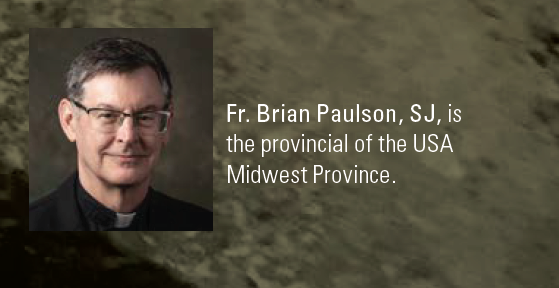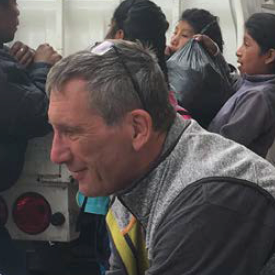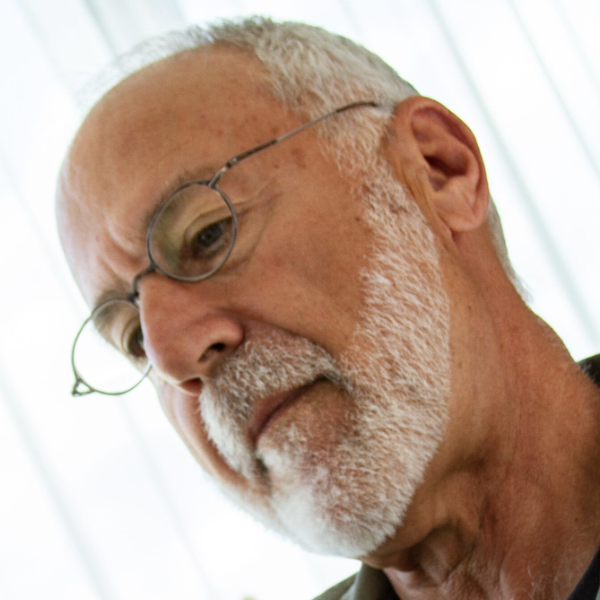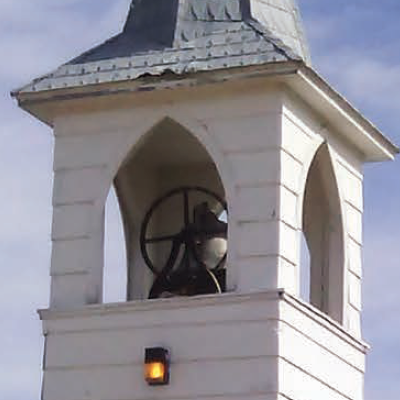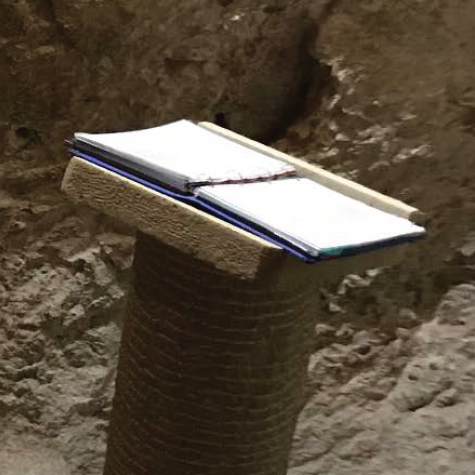
Following St. Ignatius to Follow Jesus
By Fr. Brian Paulson, SJ
After his intense months of prayer in the cave at Manresa, Spain, outside of Barcelona, Iñigo of Loyola went on a voyage across the Mediterranean to the Holy Land as a pilgrim. So intense was his love for Jesus that Iñigo felt a deep desire to physically be where Christ was known to have lived, suffered, died, and rose from the dead. One of the places Iñigo visited was the small medieval Chapel of the Ascension on the Mount of Olives. According to tradition, this chapel was built around an imprint of the feet of Jesus left in the rock when he ascended into heaven.
I had the privilege last May of making my own pilgrimage to the Holy Land, along with five other Jesuit provincials and Fr. Timothy Kesicki, SJ, the president of the Jesuit Conference of Canada and the United States, under the inspiring guidance of Fr. Brendan Lally, SJ, who has led dozens of pilgrimages to the Holy Land. Like St. Ignatius, I too had the privilege of placing my hands in the imprint where tradition tells us the feet of Jesus left a mark just before he ascended to heaven 40 days after his resurrection.
We spent six amazing days in Galilee, followed by a day of travel through Qumran near the Dead Sea, to Jerusalem, where we spent four days, including a day trip to Bethlehem.
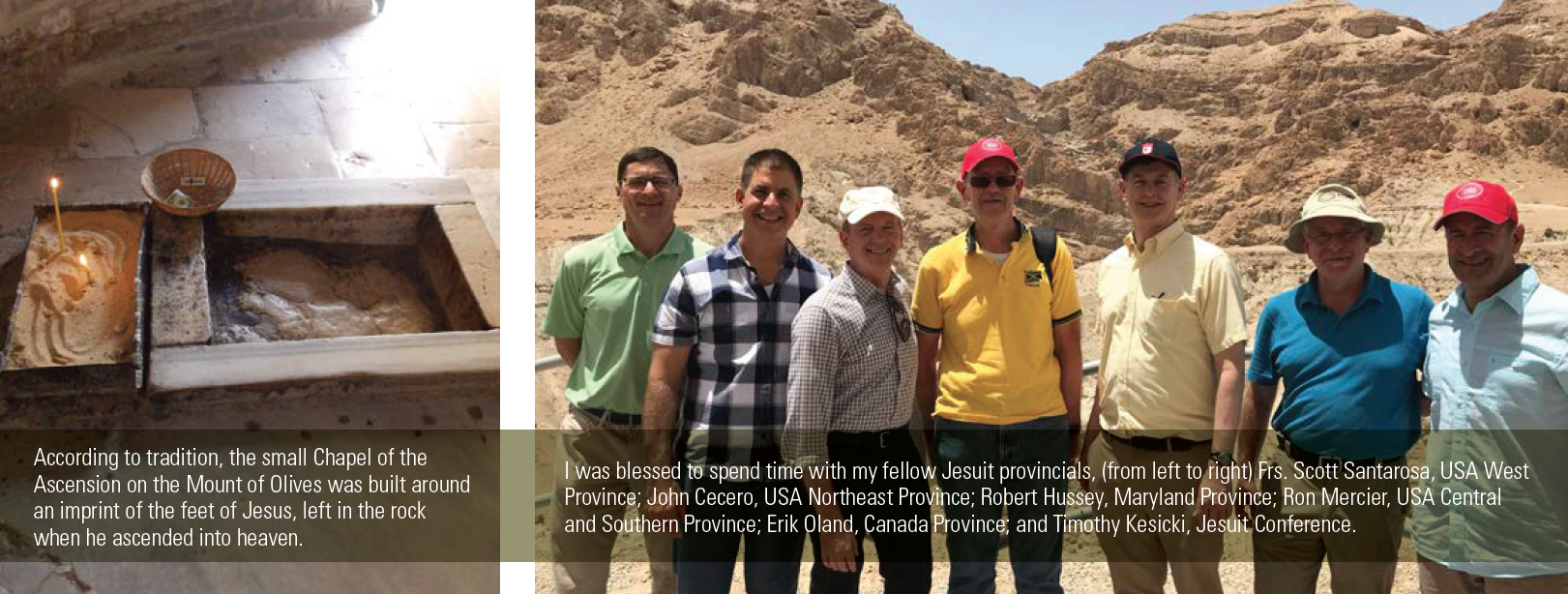
Before I left on my pilgrimage, Fr. Michael Sparough, SJ, a friend of mine who is a noted retreat director and has served as a chaplain on many pilgrimages to the Holy Land, suggested to me that I would pray Ignatian contemplations of biblical passages with new eyes after having experienced this pilgrimage. How right he was! Swimming in the Sea of Galilee and eating fish out of that lake each evening are experiences I will never forget—and that will enter into my prayer for years to come.
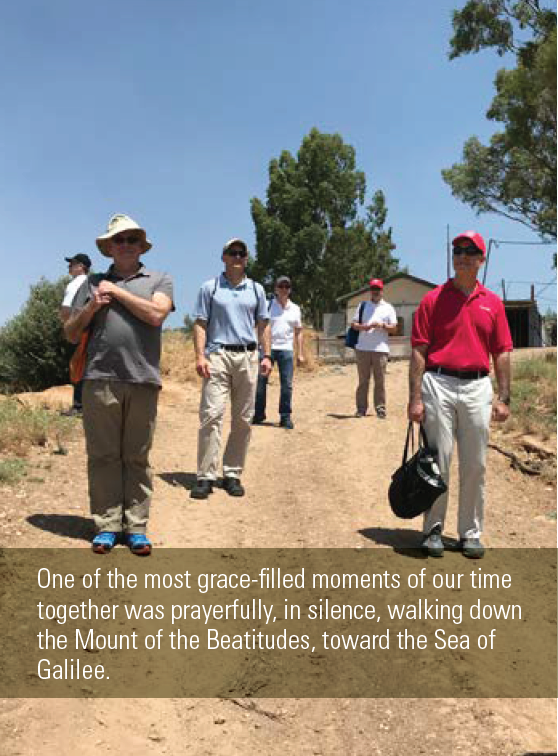
Prison cell of Jesus at the House of Caiaphas
One of the most grace-filled moments of our time together was prayerfully, in silence, walking down the Mount of the Beatitudes, toward the Sea of Galilee. Earlier, we celebrated the Eucharist together outdoors, on top of the mount, near the church and beautiful gardens which commemorate the events of Christ’s life which took place there. But what seemed most remarkable to me was that while the hill is just an ordinary hill, the sense that we were on sacred ground was palpable. It might have taken us 20 minutes to prayerfully walk down the hill. There were several places—little plateaus—where one could imagine hundreds or thousands of people gathered for the Sermon on the Mount or the multiplication of the loaves and fishes. The hillside was green. The views were spectacular. Near the bottom of the hill—but still a hundred or so feet above ground level—there was a cave-like overhang where it is said that Jesus would retreat to pray. We too took time to pray in that very cave, taking in the same view that Jesus would have enjoyed about 2000 years ago.
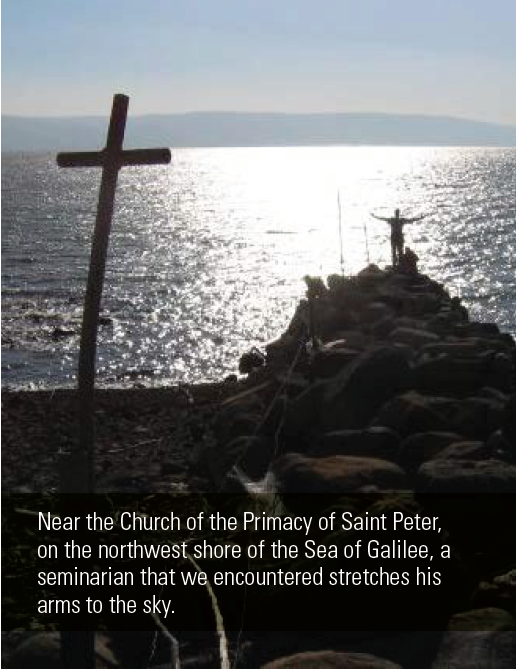
For those of us who call ourselves companions of Jesus, walking in the footsteps of Jesus and of St. Ignatius gives our lives meaning, hope, spiritual energy, and direction. I am deeply grateful to be on this journey with my brother Jesuits and with our colleagues, friends, and benefactors near and far.
